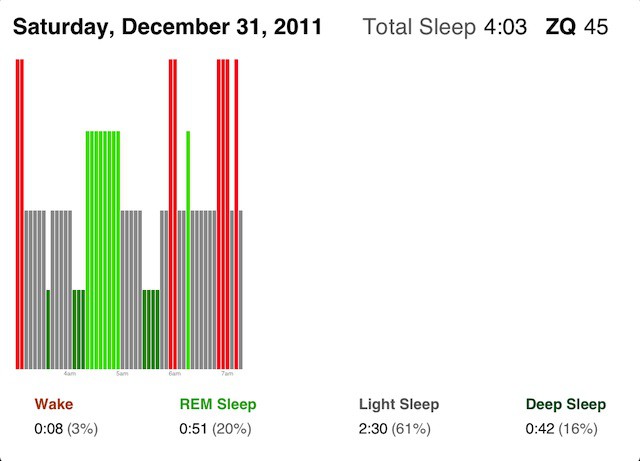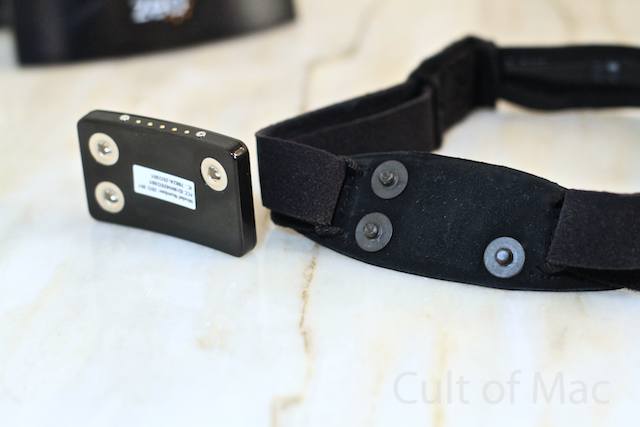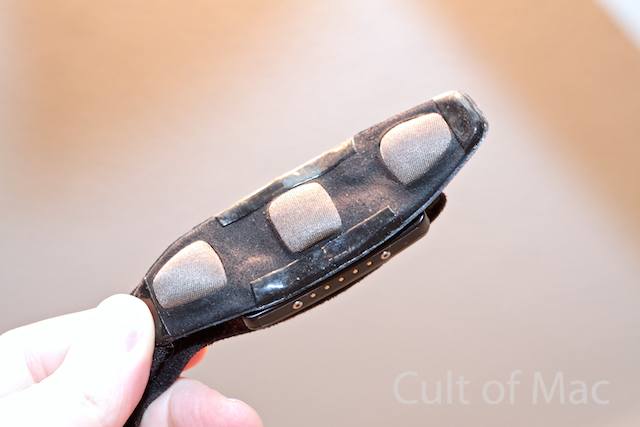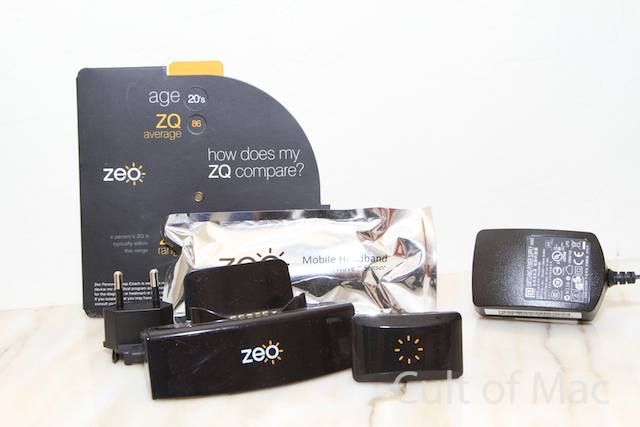The idea behind the Zeo Sleep Manager Mobile ($99) is that the quality of your sleep affects your health in a bigger way than we generally recognize, and that measuring the amount of time we sleep and its quality — then quantifying that sleep with a number on a 100-point scale — will give us the information we need to improve our sleep, and ultimately our health.
This post contains affiliate links. Cult of Mac may earn a commission when you use our links to buy items.
The Good:
The system was remarkably simple to use. Pairing is easy; I simply popped the headband onto my forehead when I was reay to go to sleep, launched the app and went to sleep. In the morning, a bat graph appeared displaying how many minutes I spent in light, deep and REM sleep, and also how many minutes I spent awake. The bar graphs are color-coded to represent the different modes of sleep. As important is what Zeo calls the “ZQ Sleep Score,” a quantified rating of how well you slept last night. That score is the easiest way to measure how lifestyle changes affect the quality of your sleep. For example, by measuring caffeine intake against ZQ Score will not just tell you if the former affects the latter (duh), but how much it’s affected.

Everything is laid out clearly and colorfully, and the readout couldn’t be any easier to understand.
The whole thing — headband and receiver — are small enough to pack in a corner of an overnight bag. The system comes with a charger, but the power input is a mini-USB port, which makes finding alternatives easy if you misplace the cable.
Multiple nights of sleep data can be stored on the device used to record it, then uploaded at any time to your Zeo account, at which point the data can be downloaded to any device with the free Zeo app logged in to your account.
Just like any good web-based health service, data from your Zeo account can be shared and plugged in to other services: RunKeeper and DailyBurn both integrate the ZQ Sleep Score to give an idea of how well you’ve recovered from a workout.
The Bad:
The SmartWake alarm — intended to wake you at the optimum point in your sleep cycle, when sleep is shifting from REM to light, after you set a rough target time — never really worked for me. I tended to actually wake up before it went off; when I did wake up from the alarm, I didn’t really feel better or worse than had I used a standard “dumb” alarm.
Zeo recommends replacing the sensor pad every three months, as body oils an degrade the padded contacts to the point where they can’t pick up data. The good news is that the pad snaps off easily; the bad news is that replacements are $20 a pop (or $50 for three).
Then there’s the headband itself. beside the fact that the tight band could be a little uncomfortable at times, it was simply a hassle to put on every night. Erratic sleep patterns, falling asleep before intending to contribute to lack of use. The iDevice receiving the info also needs to be plugged in before it’ll receive data; although this isn’t much of a detractor, because you’re probably plugging in the device at night anyway.
The big issue is the ease with which the info collected can be used — and right now, it’s just not all that easy. The consensus among the medical community seems to be that how we sleep is an important factor to health, and has a big impact in our daily lives. But despite DailyBurn and RunKeeper, there aren’t many fitness or health systems integrating the Zeo’s information just yet.
Verdict:
For some, the Zeo should prove a useful tool; for others, not so much. While the system works well, neither the data collected nor the method used to collect it is as easy to apply as we’d like. At least, not yet.
Buy from: Amazon
[xrr rating=70%]



![Zeo Sleep Manager Mobile: It’s a Scale — But For Sleep, Not Weight [Review, Fitness Special] zeo-sleep-manager-mobile-5](https://www.cultofmac.com/wp-content/uploads/2012/01/zeo-sleep-manager-mobile-5.jpg)

